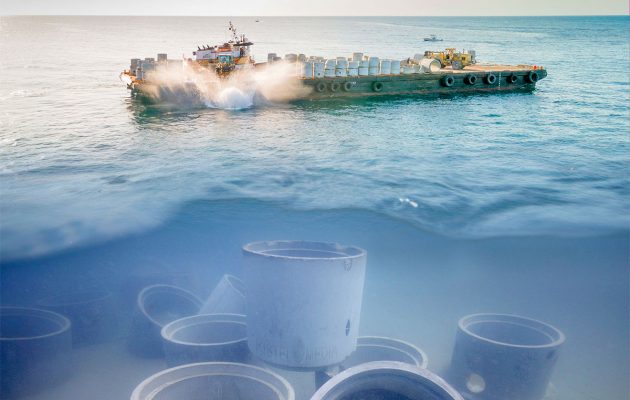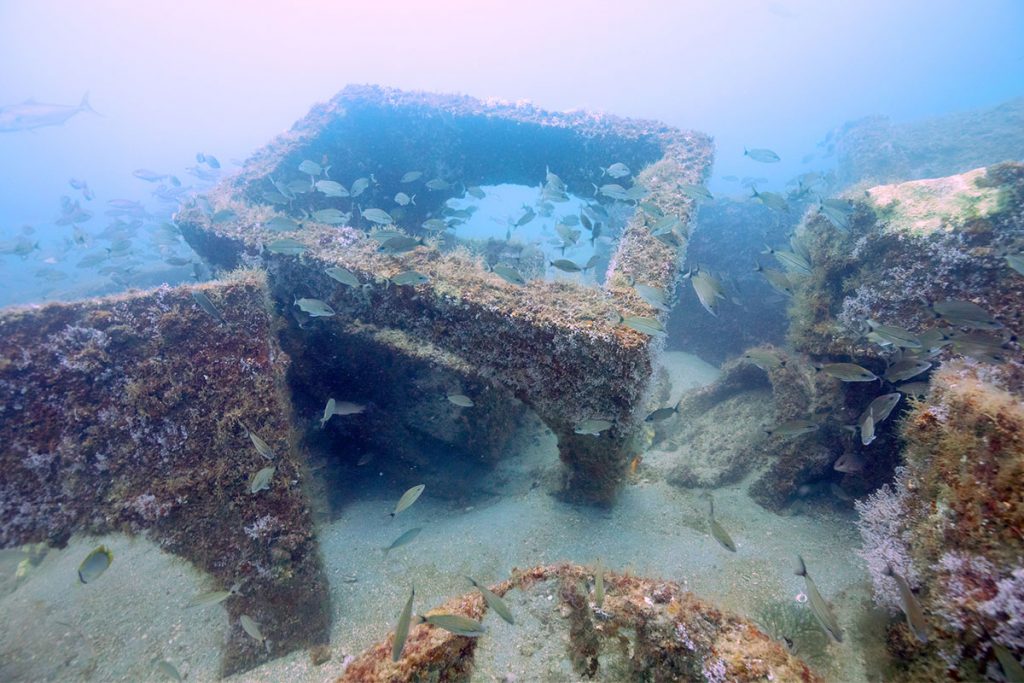Artificial reefs making way to local coastlines
Posted on November 1, 2022 By Editor Top Stories

More artificial reefs are coming to the coast of Jacksonville as the underwater attractions for fish, coral and other sea life have the potential to feed seafood lovers and the local economy alike.
Erin Johnson of the North Florida Marine Association said the organization donated some $2,500 last August to create an artificial reef in conjunction with other organizations like Jacksonville Marine Charities, the nonprofit behind the Jacksonville Kingfish Tournament.
She said two salvaged boats are set for sinking after donated labor decontaminates and relocates them to their final resting place under the sea.
“It’s not as easy as people think,” she said of sinking a boat, which she witnessed earlier this year.
There’s permitting, draining, cleaning and moving the vessels around with barges, all of which are costly.
“It’s a cool experience, and it’s important for the whole marine industry,” she said. “…The more reefs there are, the more opportunities for people to fish, dive and enjoy our natural resources so we can conserve them and pass them on to our children.” That’s music to fishermen of the spear and rod alike.
Joe Kistel makes a living documenting the deep seas of Northeast Florida while diving and spear fishing.
“If we find material and resources, we can deploy … pretty much anytime, besides the winter during Right Whale season,” said Mr. Kistel, who’s been an advocate for artificial reefs for the last decade.
He coordinated his first project in 2009 about 28 miles offshore. Today he says he feels like a “messenger in the middle” between disparate counties attempting to boost marine tourism by creating more artificial reefs from otherwise useless but remediated refuse.
“I also have a background in conservation,” said the diver and marine photographer. “… Locally, as someone who understands the process, I feel like I have responsibility …”
“Artificial reefs, and reefs in general, in Northeast Florida, are more of a secret than they should be,” said the 42-year-old Hecksher Drive resident in late October.
“It’s something I’ve personally tried to change,” he said following some positive discussions in mid-October of the Jacksonville City Council’s Waterways Commission.
“We have amazing resources on our coastlines and believe people will be more apt to take care of them when they know they’re there,” he said.
The Florida Keys may reign supreme in boating and fishing circles, but Mr. Kistel argues North Florida has something offer, too.
“South Florida is fished-out,” he said. “The perception is it’s easier to get out down there; much easier. In Southeast and Southwest Florida, you drive around and it’s everywhere. Here, you barely know it’s an option.”
Fishing is common on Jacksonville’s shorelines, beaches, rivers and creeks, so the most diversity in catches comes further off the coastline.
“Off-shore, there’s a good quantity and diversity of fish; different than what you see down south, so I advocate for diving here in North Florida,” he said.
He said grant funding from the City of Jacksonville, the Florida Fish and Wildlife Conservation Commission and private sources create more artificial reefs in the region, but the dollars come with “red tape” that “makes it hard to utilize.”

In terms of meeting the demand for more reefs, he said the amount of funding and delays in receiving grant funding after an application falls short. He said the time between getting a call about an old boat or some concrete or other debris for disposal and receiving approval for grant funding has been as long as two years.
By that time, donors often move on.
“It’s not something you can depend on,” said Mr. Kistel.
Because of the lack of environmental regulations historically, artificial reefs were created without much public oversight in the past.
“They threw anything in the ocean,” Mr. Kistel said, which created issues for military submarines and prompted more government involvement.
To date there have been some 20-plus permits issued for artificial reef areas in the region, said Mr. Kistel, all occupied to varying degrees but each having the potential for 10-15 reefs.
He’s been involved in some 7-8 artificial reef projects, the last off the coast of St. Augustine that’s become popularly known as the “Andy King site,” he said.
It was 8-9 miles off-shore and deployed last summer with 200 large concrete culverts big enough to walk through donated by Rinker.
“From a diving perspective, that’s cool,” he said.
“Finding material is not difficult as far as concrete,” said Mr. Kistel, noting that not everywhere are artificial reefs made of old boats or construction materials.
“You can find recycled concrete pretty easy, so you don’t have to build something if you don’t want to. The fish don’t care if it looks like a fish house or not …” he said.
By Joel Addington
Resident Community News




 (No Ratings Yet)
(No Ratings Yet)artificial reefs, Erin Johnson, Jacksonville Marine Charities, Joe Kistel, North Florida Marine Association, Waterways Commission





